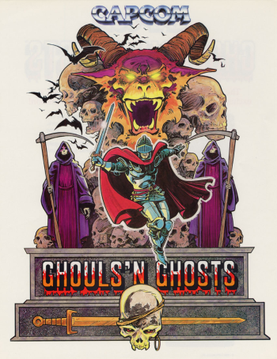
Ghouls 'n Ghosts, known as Dai Makaimura in Japan, is a side-scrolling platform game developed by Capcom, released as an arcade video game in 1988 and ported to home platforms. It is the sequel to Ghosts 'n Goblins and the second game in the Ghosts 'n Goblins series.

Paradroid is a Commodore 64 computer game written by Andrew Braybrook and published by Hewson Consultants in 1985. It is a shoot 'em up with puzzle elements and was critically praised at release. The objective is to clear a fleet of spaceships of hostile robots by destroying them or taking them over via a mini-game. It was later remade as Paradroid 90 for the Commodore Amiga and Atari ST home computers and as Paradroid 2000 for the Acorn Archimedes. There exist several fan-made remakes for modern PCs. In 2004 the Commodore 64 version was re-released as a built-in game on the C64 Direct-to-TV, and in 2008 for the Wii Virtual Console in Europe.

Zzap!64 was a computer games magazine covering games for computers manufactured by Commodore International, especially the Commodore 64 (C64). It was published in the UK by Newsfield Publications Ltd and later by Europress Impact.
1989 saw many sequels and prequels in video games, such as Phantasy Star II, Super Mario Land, Super Monaco GP, along with new titles such as Big Run, Bonk's Adventure, Final Fight, Golden Axe, Strider, Hard Drivin' and Teenage Mutant Ninja Turtles. The year also saw the release of the Sega Genesis and TurboGrafx-16 in North America, and the Game Boy worldwide along with Tetris and Super Mario Land.
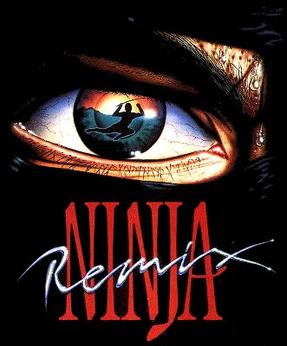
Last Ninja is a series of video games published by System 3. The first game in the series titled The Last Ninja, was released in 1987 for the Commodore 64 and was one of the most successful games for the system. In 1988, System 3 released Last Ninja 2, and in 1991 the third game in the series, Last Ninja 3. In 1990, Last Ninja Remix was released for 8-bit systems. This was Last Ninja 2 with new music, a new introductory sequence, slightly changed graphics and fixed bugs. Confusingly, the 16-bit versions of the original The Last Ninja game were also released in 1990 as Ninja Remix.

Future Basketball is a futuristic basketball video game released by Hewson Consultants for the Amiga and Atari ST in 1990. It was ported for the Super Nintendo Entertainment System (SNES) by Hudson Soft in 1991 as Bill Laimbeer's Combat Basketball. It was the first basketball game released for the SNES. The game stars Bill Laimbeer, who played for the Detroit Pistons of the NBA during a time when the team was notorious for aggressive and dirty, physical play.

Shadow Dancer is a side-scrolling hack-and-slash action game produced by Sega and originally released as an arcade game in 1989. It is the second and the final arcade game in the Shinobi series, following the original Shinobi itself. The player controls a ninja aided by an attack dog, who is fighting to save the city from a terrorist organization.
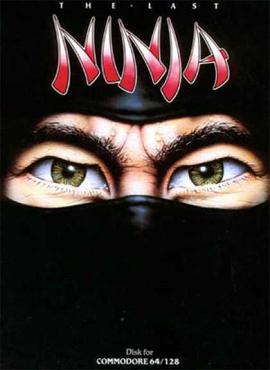
The Last Ninja is an action-adventure game originally developed and published by System 3 in 1987 for the Commodore 64. It was converted to the Apple IIGS, MS-DOS, BBC Micro and Acorn Electron in 1988, the Apple II series in 1989, the Amiga and Atari ST in 1990, and the Acorn Archimedes in 1991.
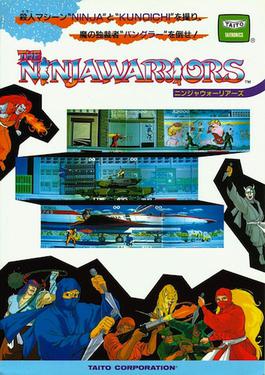
The Ninja Warriors (ニンジャウォーリアーズ) is a side-scrolling beat 'em up video game developed and released by Taito in 1987. The original arcade game situated one display in between projected images of two other displays, creating the appearance of a triple-wide screen. Ports were released for home systems including the Amiga, Atari ST, ZX Spectrum, Commodore 64, Amstrad CPC, PC Engine, and Sega Mega-CD.
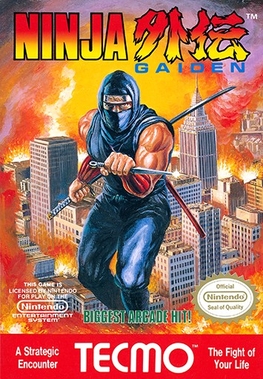
Ninja Gaiden, released in Japan as Ninja Ryūkenden and as Shadow Warriors in Europe, is an action-platform video game developed and published by Tecmo for the Nintendo Entertainment System. Its development and release coincided with the beat 'em up arcade version of the same name. It was released in December 1988 in Japan, in March 1989 in North America, and in August 1991 in Europe. It has been ported to several other platforms, including the PC Engine, the Super NES, and mobile phones.
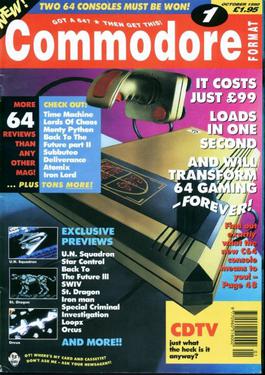
Commodore Format was a British magazine for users of the Commodore 64 home computer. It was published on the third Thursday of every month. All 61 issues were produced by Future plc. These came towards the end of the machine's commercial life - from October 1990 until October 1995.
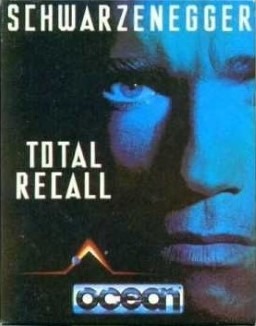
Total Recall is a 1990 platform game developed and published by Ocean Software that was released for the Commodore 64, Amiga, Amstrad CPC, ZX Spectrum, Atari ST, and Nintendo Entertainment System. Total Recall is based on the 1990 film of the same name.

F29 Retaliator is a combat flight simulator video game developed by Digital Image Design and published by Ocean Software in 1989 Amiga and Atari ST, 1991 for the PC, and for the FM Towns and NEC PC-9801 in 1992-1993. Its working title was just Retaliator. The game was developed during the end of the Cold War, based mostly on speculations on then-future aircraft that were expected to be in use by the year 2002, in particular based on the design of the Lockheed Martin F-22 and the Grumman X-29A.

Hammerfist is a side-scrolling beat 'em up video game developed by Vivid Image and released in 1990 for the Amiga, Atari ST, Commodore 64, Amstrad CPC and ZX Spectrum.

Last Ninja 3 is an action-adventure video game that was developed and published by System 3 for the Commodore 64, Amiga, Atari ST in 1991. It is a sequel to the 1988 game Last Ninja 2.
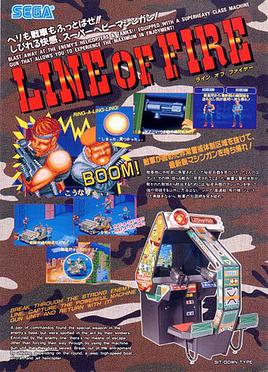
Line of Fire is a first-person light gun shooter game developed by Sega and released for arcades in 1989. It was released with two arcade cabinet versions, a standard upright and a sit-down cockpit, both featuring two positional guns. The cockpit design allows the player(s) to sit down while playing the game, while having two-handed machine guns, controlled by a potentiometer-controlled gun alignment software system. The game follows a two-man commando unit as they try to escape from a terrorist facility after seizing a prototype weapon.

Last Ninja 2: Back with a Vengeance is an action-adventure video game developed and published by System 3 for the Commodore 64, ZX Spectrum and Amstrad CPC in 1988 as a sequel to the 1987 game The Last Ninja. The Acorn Electron, BBC Micro, 1990: Amiga, Atari ST, MS-DOS and NES ports followed in 1989. The NES version of the game was named simply The Last Ninja. In 1990, the Last Ninja Remix edition of the game was re-released for 8-bit systems.

Teenage Mutant Ninja Turtles, released in Japan as TMNT: Super Kame Ninja and in Europe as Teenage Mutant Hero Turtles, is a 1989 beat 'em up arcade game released by Konami. It is based on the Teenage Mutant Ninja Turtles franchise, including the first animated series that began airing two years earlier. In the game, up to four players control the titular Ninja Turtles, fighting through various levels to defeat the turtles' enemies, including the Shredder, Krang and the Foot Clan. Released during a high point in popularity for the Teenage Mutant Ninja Turtles franchise, the arcade game was a worldwide hit, becoming the highest-grossing dedicated arcade game of 1990 in the United States and Konami's highest-grossing arcade game. Versions for various home systems soon followed, including the Nintendo Entertainment System. A sequel, Teenage Mutant Ninja Turtles: Turtles in Time, was released in 1991.

Ninja is a beat 'em up game developed by Sculptured Software and released by Mastertronic in 1986 for the Atari 8-bit family, Commodore 64, and ZX Spectrum, then in 1987 for the Amstrad CPC, Amiga, Atari ST, and MS-DOS. An arcade version of the game was released in 1987 for Mastertronic's Arcadia Systems which is based on Amiga hardware. The Amiga, Atari ST, and Arcade versions were released as Ninja Mission. As a Ninja, the player attacks a fortress made of individual fixed screens which can be explored non-linearly.

Judge Dredd is a 1991 platform shoot 'em up video game based on the character of the same name. It was developed by Random Access and published by Virgin Mastertronic. It was released in Europe in 1991, for the Amiga, Atari ST, Commodore 64, and ZX Spectrum. Critics found the gameplay repetitive.



















